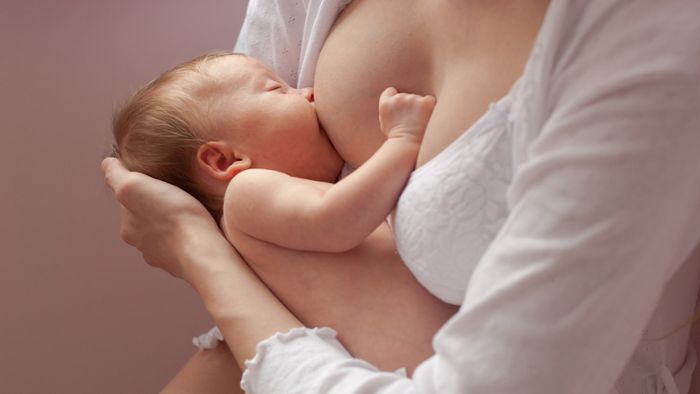Mothers of a breast fed baby always know that the stool color of her baby remains green. But, if you are a new mother and yet to experience it, keep this fact in your mind. Do not panic whenever your baby’s stool in greenish. Some parents would desperately run to the pediatrician after they view the stool getting green. But, even the pediatrician will say this is totally normal. One of the reasons behind it is getting too much of watery milk. Mother might not be able to give him rich variety of milk that is having all nutrients intact.
Basic facts of breastmilk
Breast milk is the ideal milk for a baby. There are methods for working women to feed their baby with breast milk. The most vital part of breast milk is the colostrum which is the first pare of the milk after delivery. The baby gets all the nourishment from breast milk required for its growth in the first six months. There is no need to give water at this time. Mothers must be convinced that breast feeding is not only important for the baby but is also good for the mother’s health also.
Breast fed babies have different pattern of stools varying from time to time. A breastfed baby’s stool is normally mustard coloured, seedy and runny. These stools have a distinct odour. A breastfed baby passes stool after every feed.Green stool s a not necessarily a reason of anxiety if the baby is growing well and developing normally. Any change in the mother’s diet can change the colour and consistency of the baby’s stool.
There are the following possibilities of the stools being green in colour—
- A baby having jaundice can have dark or greenish colored stools. This normally clears once the baby is off the bilirubin lights.
- Some babies are sensitive to the diet taken by the mother. Certain dairy products taken by the mother are the cause of food allergies in babies. The allergy causing must be observed for some time and then eliminated from the mother’s diet.
- Green stools are also the result of mother’s hindmilk or foremilk. It must be understood that the milk that comes out first is the foremilk which is thin and low in fat, whereas the later (hind milk) becomes richer and fattier. When babies get more foremilk and less hind milk there is a chance of the stools getting green and giving tummy aches to the baby. This happens when there is more switching of breasts instead of the baby getting a good feed from one breast first.
- Some medicines or iron tablets taken by the mother can produce green stools in the breastfed baby.
- Babies having more of foremilk that is low fat watery milk may be under nourished and remain hungry and will want to be fed again and again adding to the foremilk intake. This gives the baby more of lactose from the watery milk. The digestion of excess lactose is difficult and it gives rise to cramping pains and green stools. This problem can easily be solved by feeding the baby for sufficient time on each breast.
- Antibiotics taken by the mother can cause a windy/fussy green stool in infant. A virus of some kind can also make the stool dark green for a short time.
Is it a matter of concern if the baby has green stools?
After understanding the reasons given above for a breastfed baby to have green stools, it must be known that there is nothing to worry if there are green stools in a breastfed baby. One has to find the reason for it and try to eliminate the cause whichmay require some changes in diet of the mother and in the method of feeding. In spite of the fact that mother’s milk gives rise to colic pain babies there is no reason to stop mother’s milk which plays a vital role in keeping the baby and mother healthy.
Importance of breastfeeding for baby and mother
- Breastfeeding protects babies from infections associated with lungs, heart and stomach. diabetes and asthma.
- Breast milk changes as the baby grows. The initial colostrum changes to mature milk with the right amount of fat, sugar, water and protein.
- Breast milk is easier to digest for the baby, especially for premature babies.
- Mothers life becomes easier while breast feeding. There is no worry of preparing milk, boiling and sterilizing bottles at odd hours.
- Breast feeding saves money and is possible for everyone.
- Mother and baby get great satisfaction with the physical contact with each other while feeding.
- Breast feeding improves the mother’s health as there is a low risk of breast and ovarian cancer and diabetes.
- Breast feeding mothers find that their baby gets ill less often.
Reason of breast fed baby’s stool green
Lack of nutrition
Sometimes mother’s milk does not contain enough nutrition which makes the baby get green color stool. The nursing mother might not be having healthy food. Or else mother must be weak from inside. It is better to consult a physician or an expert to get away from such situation.
Stomach infection
Babies are too much susceptible to stomach infection. They can easily get these types of infections due to changes in the environment. Also when the food habit changes a little bit, they can have stomach infection, which can easily lead to green stool. You need to consult a doctor during such a situation.
Lack of good fat
The breast milk is known as the complete food for every baby especially when he is consuming mother’s breast milk. This is the healthiest food for every baby as it helps babies to get all types of protein and vitamins which his body requires. Even when the baby does not get healthy fat within his body, it can give rise to various complications. Green stool is one among such type.
Tummy bug
Sometimes your baby can be affected with the tummy bug. The worm inside your baby’s stomach can also be a reason behind his green stool. But this is not at all a serious condition. Your baby can easily stay in a healthy condition once the breast milk is continues. But the mother should make sure that he is getting all nutritious food.





